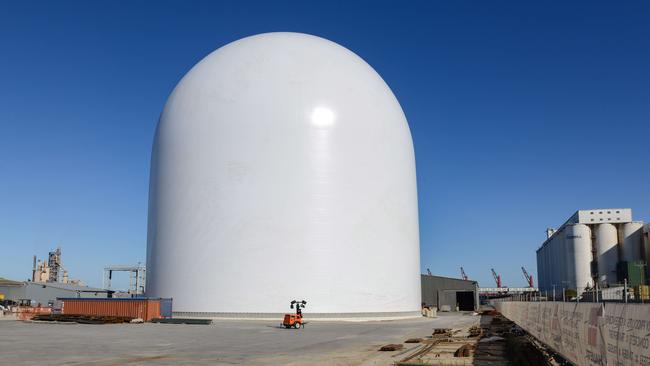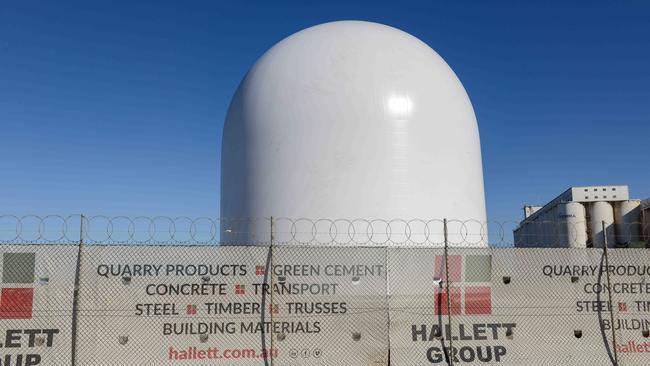Hallett Group’s collapsed ‘minion’ storage dome has been revived
A revised version of the enormous dome at Port Adelaide, which disintegrated just days after it was erected, has been rectified.
SA News
Don't miss out on the headlines from SA News. Followed categories will be added to My News.
A revised version of Port Adelaide’s enormous inflatable storage dome has been erected less than four weeks after the original one collapsed.
On Friday, Hallett Group announced a brand new dome had been installed after an internal investigation revealed an incorrect step in the construction process left the 42m-tall original one in tatters.
In a statement, the company said design and “process control” improvements were adopted to ensure the new dome was stable and strong.
The replacement was manufactured in Canada and air freighted to Australia.
“Our team has done a remarkable job to get this rectification process complete in record time,” Hallett Group chief executive Kane Salisbury said.
“We thank the many supply and customer partners that assisted us through this period as we get on with the job of delivering one of the largest carbon reduction projects in Australia.


The original dome was inflated in late January for a project to store concrete while minimising dust at Hallett’s “green cement” distribution centre.
Green cement is made using discarded industrial waste products and is spruiked as resulting in drastically lower carbon emissions than traditional methods.
The inflatable skin of the dome is an outer layer for a soon to be constructed structure made from 17,000 tonnes of concrete and 2000 tonnes of steel.
It is expected to be capable of storing up to 52,000 tonnes of cement.
At the time of the first dome’s collapse, Mr Salisbury has said the setback was “very disappointing” for the company.
“We are immensely proud to be building the first ever dome silo in Australia,” he said.
“So, it’s a blow but we’re a strong and resilient business and we will certainly pick ourselves up and dust ourselves off and that’s already happening.”
The construction technique has been successfully performed over 2000 times around the globe.





